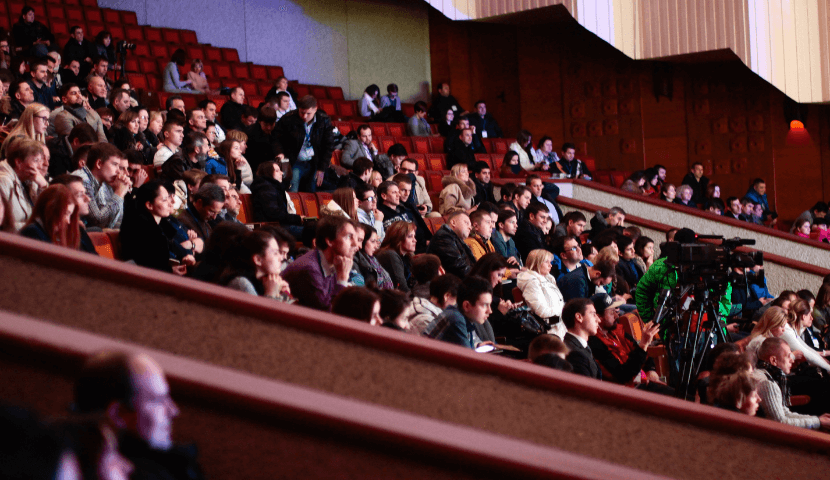Our audiences are irrational—it’s not an insult!

Jamie Alexander
Vice President, Growth and Development
The beauty of working in arts marketing is that we get to embrace both sides of our brains—the part that loves to dives into ticket sales figures, and the part that loves to brainstorm taglines, show images, or fun ideas for post-show parties.
In other words, we love to embrace our own “rational” and “irrational” thinking.
You might be thinking, “Irrational? I’m not irrational!” But before you recoil too much at the use of that word, let’s take a step back and talk about what rational and irrational thinking really mean.
- Rational Thinking – Part of the Reflective System of thought, this mode of thinking is deliberate and self-conscious. It’s what you use when doing math, planning road trips, and thinking over difficult decisions.
- Irrational Thinking – Part of the Automatic System of thought, this mode of thinking is rapid, instinctual, and emotional. It takes place in the older part of our brains which also tells us to fight or flight in dangerous situations. It can also be blamed for those great ideas that pop into your head in the shower.
When, for example, you are budgeting for the season, you are most likely engaging in reflective, rational thinking. And when you’re brainstorming ideas for a show and suddenly a really great tagline jumps into your head, you are engaging in automatic, irrational thinking.
Just like you, the people in your audience are working with these two systems of thought as well. When they purchase a ticket from your organization they may be engaging in rational thought—they may be weighing the cost of the ticket against their budget for the month, considering where they might have the best view of the stage, or assessing if they can get from work to the show on time.
But chances are high that their purchase is heavily influenced by the irrational side of their brains. Why do they want to see your play in the first place? Does it appeal to a deeply embedded love of the arts? Do they have an emotional connection to the topic? Does seeing your show help build the image of themselves that they are trying to create?
Irrational thought can creep into every choice of the buying experience. Out of 5 price levels, why did they pick the $60 seats over the $70 seats? Why did they pick house right instead of house left? There are micro decisions happening all the time that aren’t necessarily the result of reflective thinking.
Having the awareness of people’s dual modes of thinking will help fine-tune your messaging and make sure that you’re being deliberate about how you appeal to people. There are times when you might lean heavily on people’s rational thinking and others where appealing to people’s irrationality may be what influences the behavior you want to see.
A classic example of a commercial that deals with these two modes of thinking beautifully are the old Mastercard commercials:
- Two baseball tickets: $46
- Two hotdogs, two popcorns, two sodas: $27
- One autographed baseball: $50
- Real conversation with 11 year-old son: Priceless
Often our marketing messages in the arts appeal to our audiences’ rational thought:
- “Best availability on x night!”
- “Subscribers get the best seats at the best price!”
- “Buy early for a discount!”
- The messages can work, but as we see from our ticket sales data, a large amount of our audiences don’t act on these offers.
Instead, what if we flipped these messages to appeal to people’s irrational thinking:
- “Shorter bathroom lines on x night!”
- “Join 100 other members who share your love of the arts!”
- “Set time aside for your imagination to run free.”
You can also appeal to irrational thinking by using tactics like:
- In a list of subscription options, highlight the option that you want your audience to buy.
- Add a Premium or VIP ticket price to make the previous top price look more appealing.
- Prime your audience to think about subscribing by having your Front-of-House staff casually talk to people about whether or not they have considered subscribing.
These tactics will make people naturally gravitate toward the behavior you want to see.
If you want to learn more about how to influence your audience’s behavior by tapping into irrational thinking, I highly suggest you do some reading on behavioral economics. Behavioral economics is the study of the psychological, emotional, and social effects on people’s decisions making. The three examples I gave above come directly from behavioral economics. Highlighting a particular option is called nudging, adding an extra price is an example of decoy pricing (also called a dominated alternative), and the last example is of attribute priming. Simply reading about the theories of this area of study, and the concept of framing, may spark some ideas for your marketing campaigns.
At the end of day, we are all irrational people. And that includes your audience. Frankly, irrationality is part of what’s great about being human—where would the arts be if people only thought rationally? Don’t be afraid to lean into our beautiful, wild irrational sides in your marketing campaigns.

